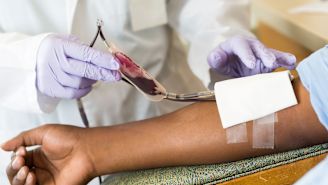Metabolism is the chemical process by which the body converts the food a person eats into energy that can be used by the body’s various cells, tissues, organs, and systems. Metabolism is a complex process, involving the interaction of many different cells, enzymes, and other substances in the body.
Metabolic disorders are medical conditions that impact the way the metabolism works. One of the most common examples of a metabolic disorder is diabetes, which prevents the body from using glucose (often referred to as “blood sugar”).
Long-chain fatty acid oxidation disorders (LC-FAODs) are a group of metabolic disorders that impact the way the body metabolizes long-chain fatty acids.
What are long-chain fatty acids?
Long-chain fatty acids are an important energy source for the body—particularly the cardiac muscles, skeletal muscles, and liver.
Fatty acids are molecules found in fats. Long-chain fatty acids are called “long-chain” because the molecular structure includes between 12 and 20 carbon atoms. The number of carbon atoms affects how the body metabolizes a fatty acid. There are also short-chain fatty acids, medium-chain fatty acids, and very long-chain fatty acids—and there are disorders that affect the metabolism of these fatty acids as well.
The “oxidation” in “long-chain fatty acid oxidation disorder” refers to the biochemical process by which these molecules are converted into substances that cells can use for energy.
Many foods contain long-chain fatty acids in varying amounts. Examples include fish, meat, dairy products, eggs, seeds, and nuts.
How common are LC-FAODs?
If you haven’t heard of LC-FAODs, you’re not alone—these disorders are rare. It’s estimated that LC-FAODs affect between 2,000 and 3,500 people living in the United States. Roughly 100 new cases are diagnosed in a given year.
However, while LC-FAODs are rare, they are recognized as a serious threat to a person’s health. Screening for LC-FAODs at birth is standard in many states in the U.S.
What causes LC-FAODs?
Long-chain fatty acid oxidation disorders are caused by an abnormal gene inherited from a person’s biological parents. This abnormal gene affects the body’s ability to make the enzymes necessary to metabolize long-chain fatty acids. There are different types of LC-FAODs, which are categorized depending on what part of the metabolic process it impacts.
When a person has a LC-FAOD, their body may not be able to produce adequate amounts of energy. The disorder can also lead to high levels of incompletely metabolized long-chain fatty acids in blood and organs. This accumulation can have a toxic effect on the body—complications include severe episodes of very low blood sugar, cardiac and neurological damage, and in some cases, death.
How are LC-FAODs diagnosed?
As mentioned above, children born in many states in the U.S. and other countries throughout the world are screened for LC-FAOD at birth. Because these screening processes are in place, most people diagnosed with LC-FAOD are newborns. However, some people with a LC-FAOD are diagnosed later in life—later in childhood, during adolescence, or as adults.
Treatment for LC-FAODs
There is no cure for LC-FAODs, but these disorders are manageable. Dietary guidelines and nutrition are an important part of management, and people with a LC-FAOD and parents of children with a LC-FAOD should work closely with healthcare providers to develop an eating plan. There is also a prescription medication for LC-FAOD that was approved by the Food and Drug Administration in 2020.
Additionally, people and families living with LC-FAOD need to work with healthcare providers to plan for an acute episode of symptoms.






